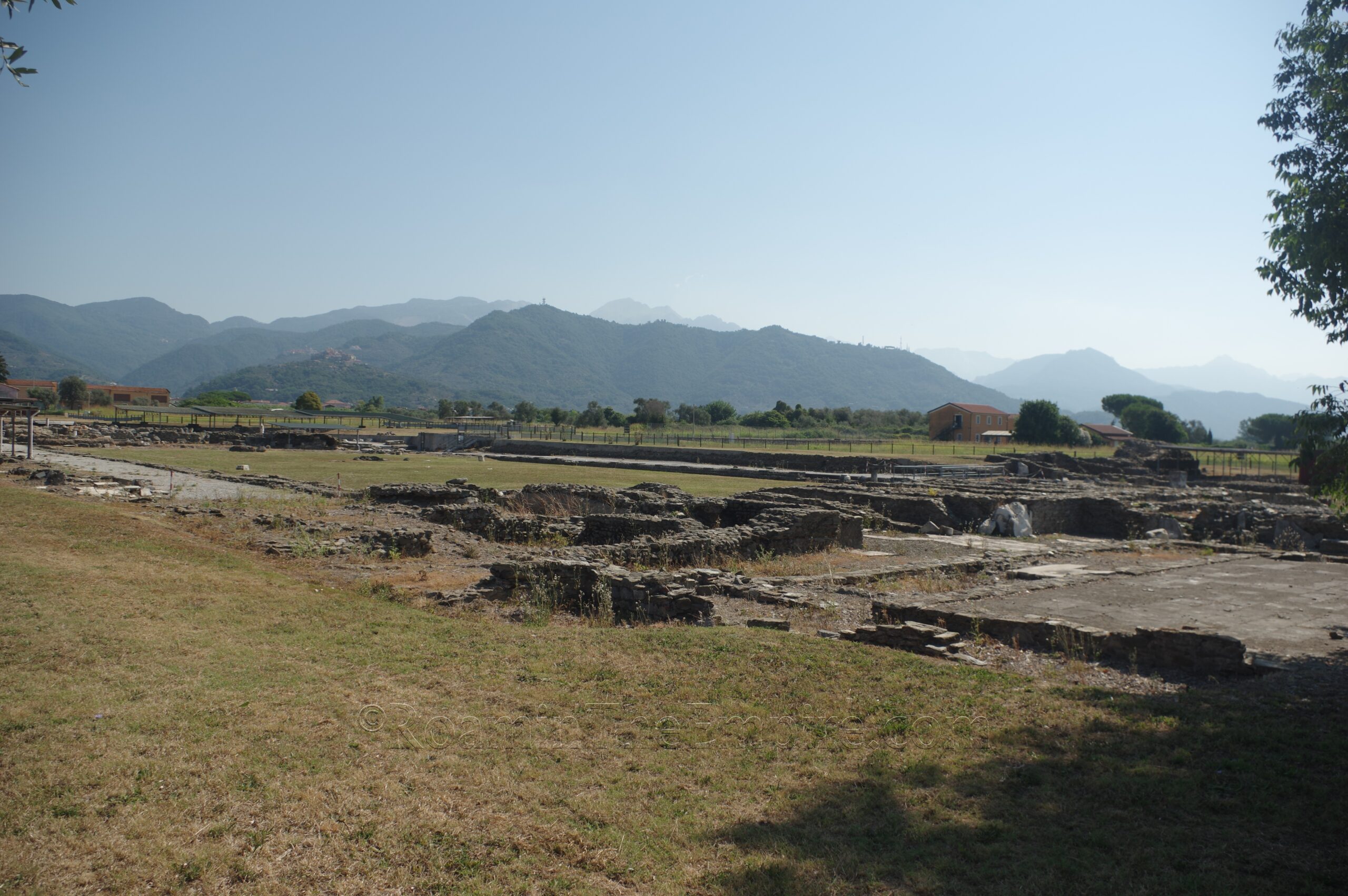
Most Recent Visit: July 2024
The Roman city of Luna was founded in 177 BCE by the triumviri coloniae deducendae of Publius Aeilus Tubero, Gnaeus Sicinius, and Marcus Aemilus Lepidus. The latter of these, not to be confused with the famous triumvir of the 1st century BCE with Octavian and Marcus Antonius, was responsible for the construction of the Via Aemilia, which was named after him. The colony consisted of 2,000 Roman citizens and doesn’t seem to have been supplanted on an existing settlement. Even in antiquity there was some debate as to whether the area was Ligurian or Etruscan, though it seems to have originally been Etruscan land, later taken by the Ligurians, who held it at the time the Romans arrived to establish the colony. The river on which the city was constructed, the Macra (modern Magra River), effectively formed the later boundary between the Roman delineated regions of Liguria and Etruria. The city was founded (along with others) as a means of establishing a Roman presence in ongoing campaigns against the Ligures, who were not effectively pacified until more than 50 years later.
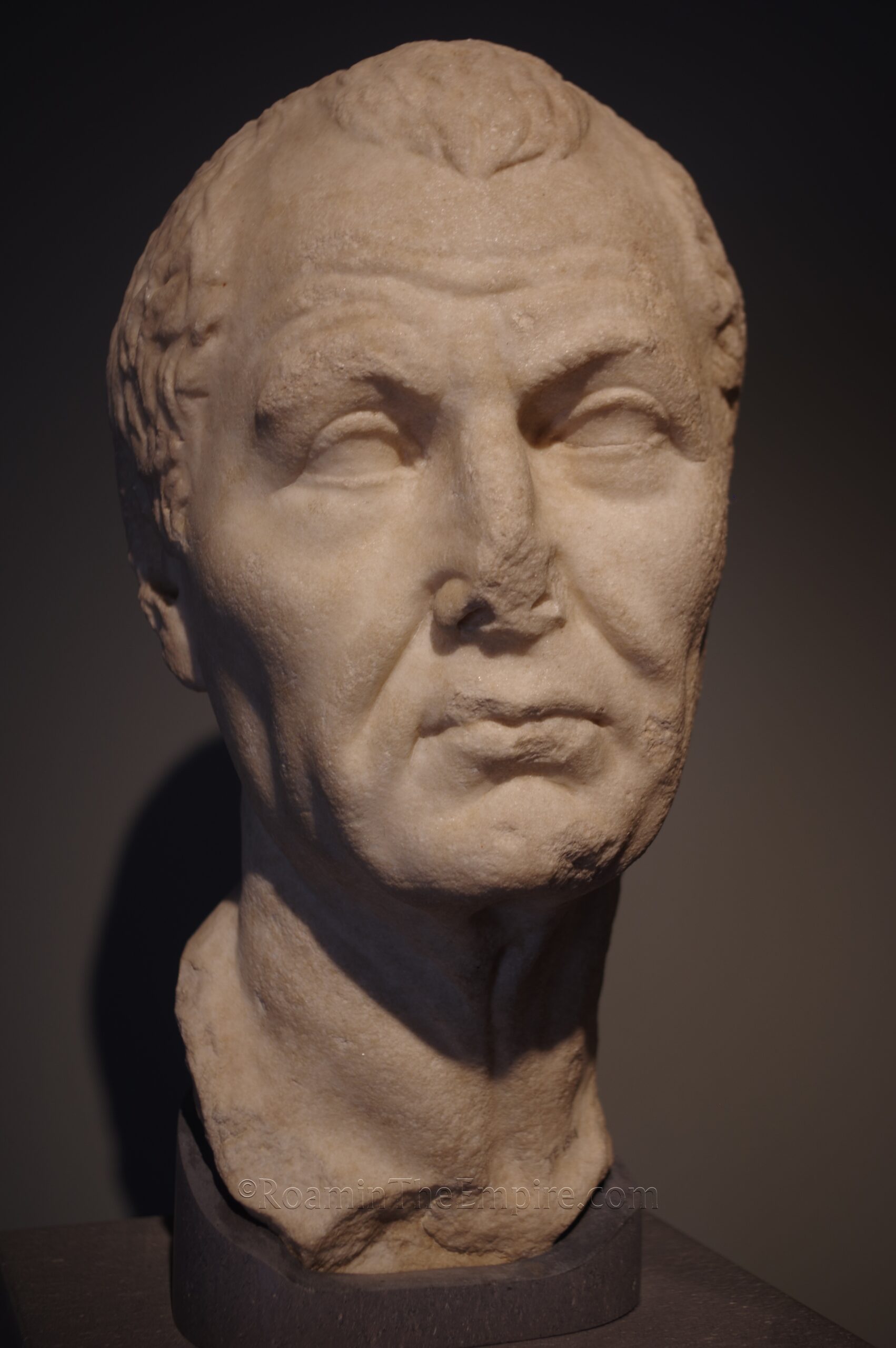
Through the remainder of the 2nd century and into the 1st century BCE, Luna seems to have remained relatively small and inconsequential. According to the late Roman writer Julius Osequens, a devastating plague hit the city in 142 BCE. In the Pharsalia, Lucan describes Luna as being desolate in the middle of the 1st century BCE. About 42 BCE (alternatively also cited as sometime after the Battle of Actium), Octavian sent a colony of veterans to Luna, perhaps partially in attempt to reverse the decline. During the time of Augustus, however, Luna saw a boon with the exploitation of the fine white marble in the nearby Apuani mountains, which would be named Luna after the city (today quarried as Carrara Marble). The marble was used extensively in Augustan refurbishment projects in Rome and the close proximity of the port of Luna allowed for easy transportation. The Pyramid of Gaius Cestius, for instance, dating to 18-12 BCE was faced in Luna Marble. By 27 CE, however, ownership of the marble quarries seems to have shifted from that of the city to the imperial family.
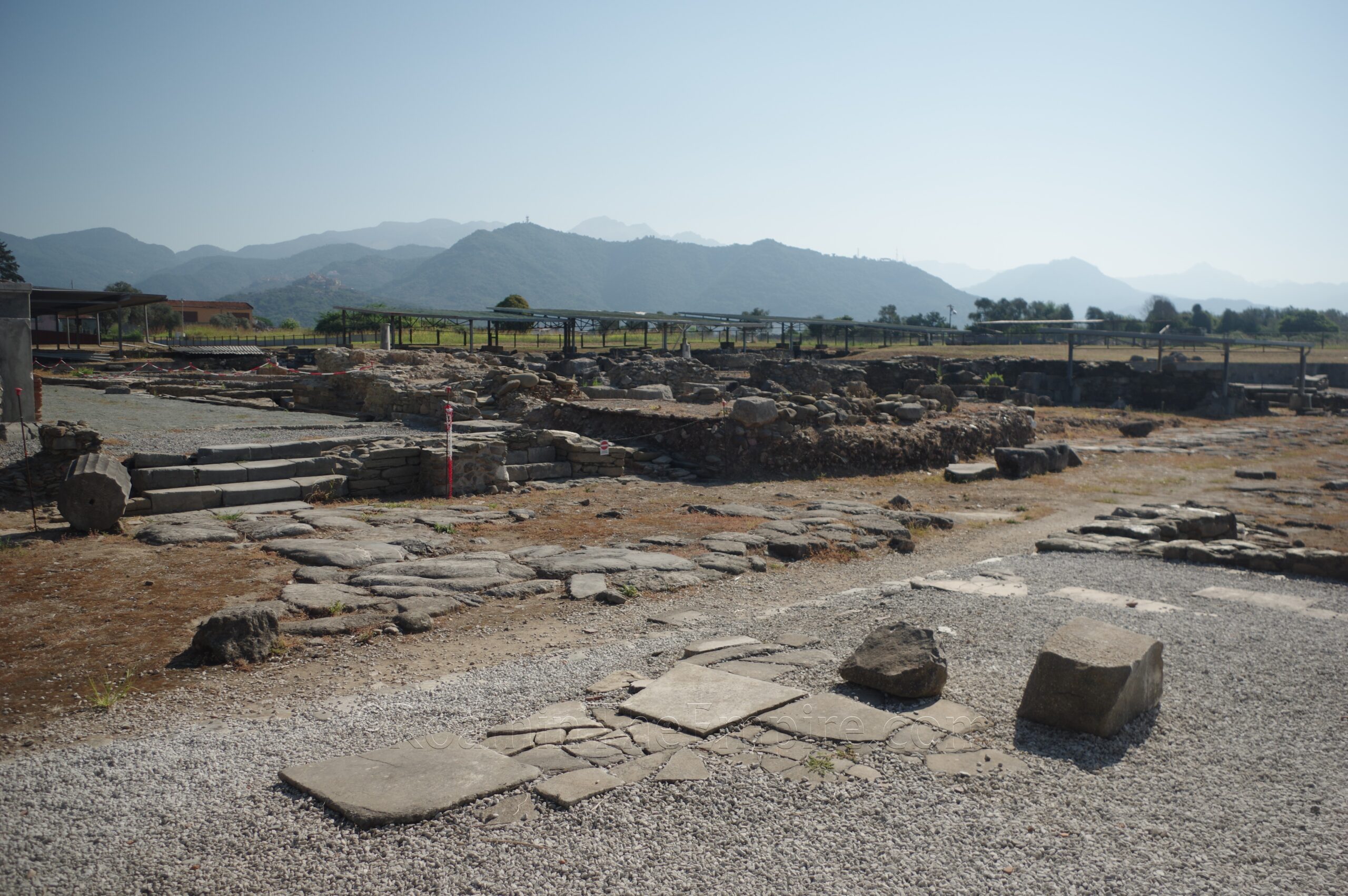
Other than the marble, Luna is noted by Pliny the Elder as having the best wine in Etruria. Both Pliny and Martial mention the city being famous for its massive cheeses, which Pliny says could way a thousand pounds and Martial claims could feed a thousand slaves. Other than these mentions, however, the city is largely absent from the historical record. It seems to have once again gone into decline in the 4th century CE. It became the seat of a bishop in the 5th century CE, but around the same time, the quarries were largely abandoned. It was subsequently captured by the Goths in the middle of the 6th century CE.
Getting There: The Luni train station is about a 20 minute, 1.5 kilometer walk from the main archaeological area. There are several trains a day running between Pisa and La Spezia that stop in Luni. A few of those are direct, which takes about 50 minutes from Pisa, while others with changes are about an hour and a half. The prices come in around 10 Euros. The trains aren’t especially regular, though, with only about 5-10 per day coming or going in either direction that stop there. By car, it’s about 45 minutes to an hour from Pisa, depending on whether you take the toll roads or not.
The main archaeological area and museum, the Museo Archeologico Nazionale e Zona Archeologica di Luni is open in the summer (March through October) Tuesday through Sunday from 8:30 to 19:30. The rest of the year it is open Tuesday through Sunday from 8:30 to 13:30. It is closed on Monday year-round Full price admission is 4 Euros for both the site and museum. There’s also an option for a 5 Euro combination ticket for the Villa Romana del Varignano Vecchio in Le Grazie, which is about an hour away.
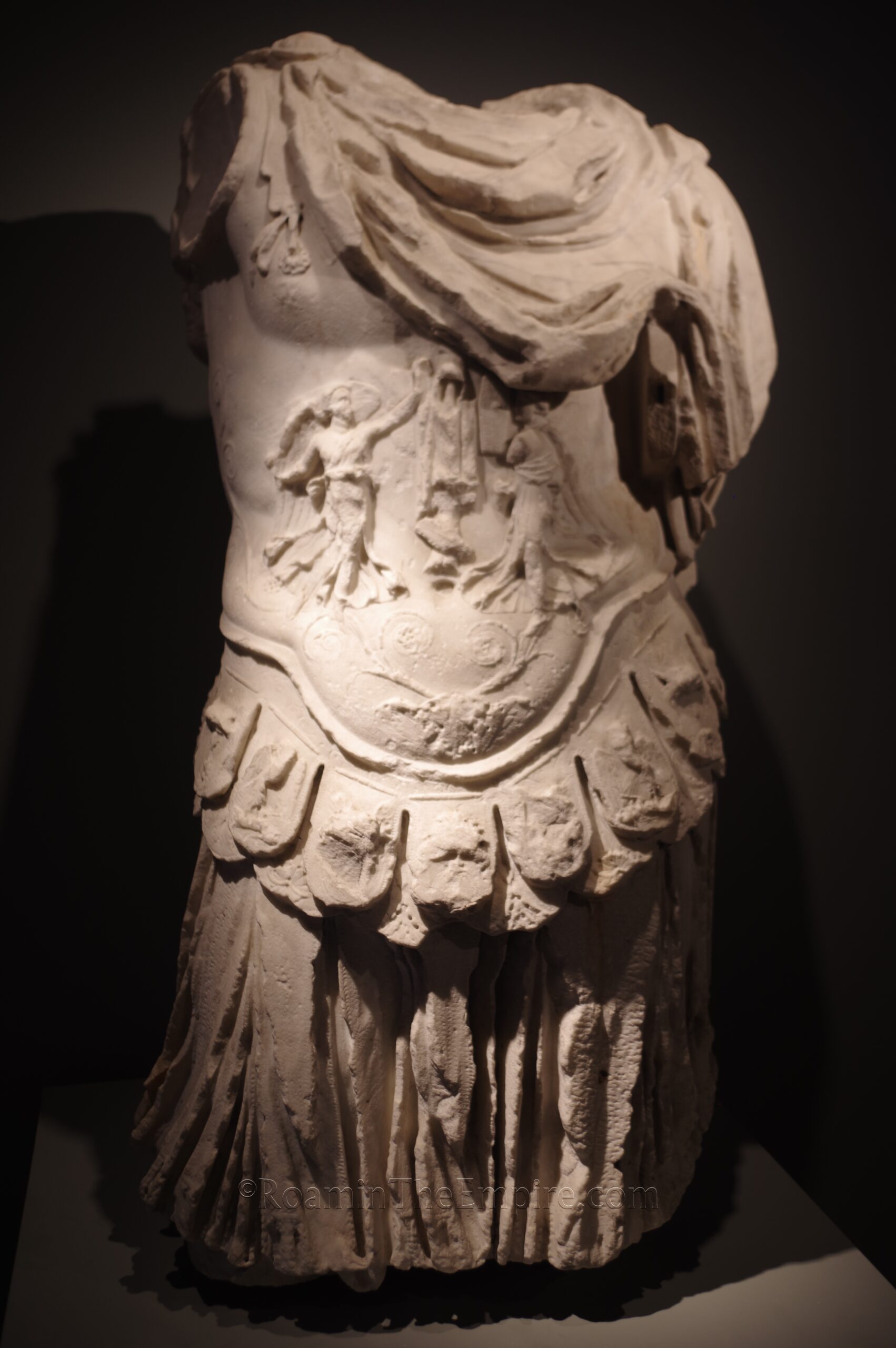
Presently and for the foreseeable future, the on-site archaeological museum is undergoing a major renovation. As such, only a single small room is currently open to the public, containing a few busts, part of a statue, and some architectural elements carved from the local Luna Marble. It’s really no more than a 5 minute stop or so before continuing on to the archaeological site (or as I did, after the archaeological site).
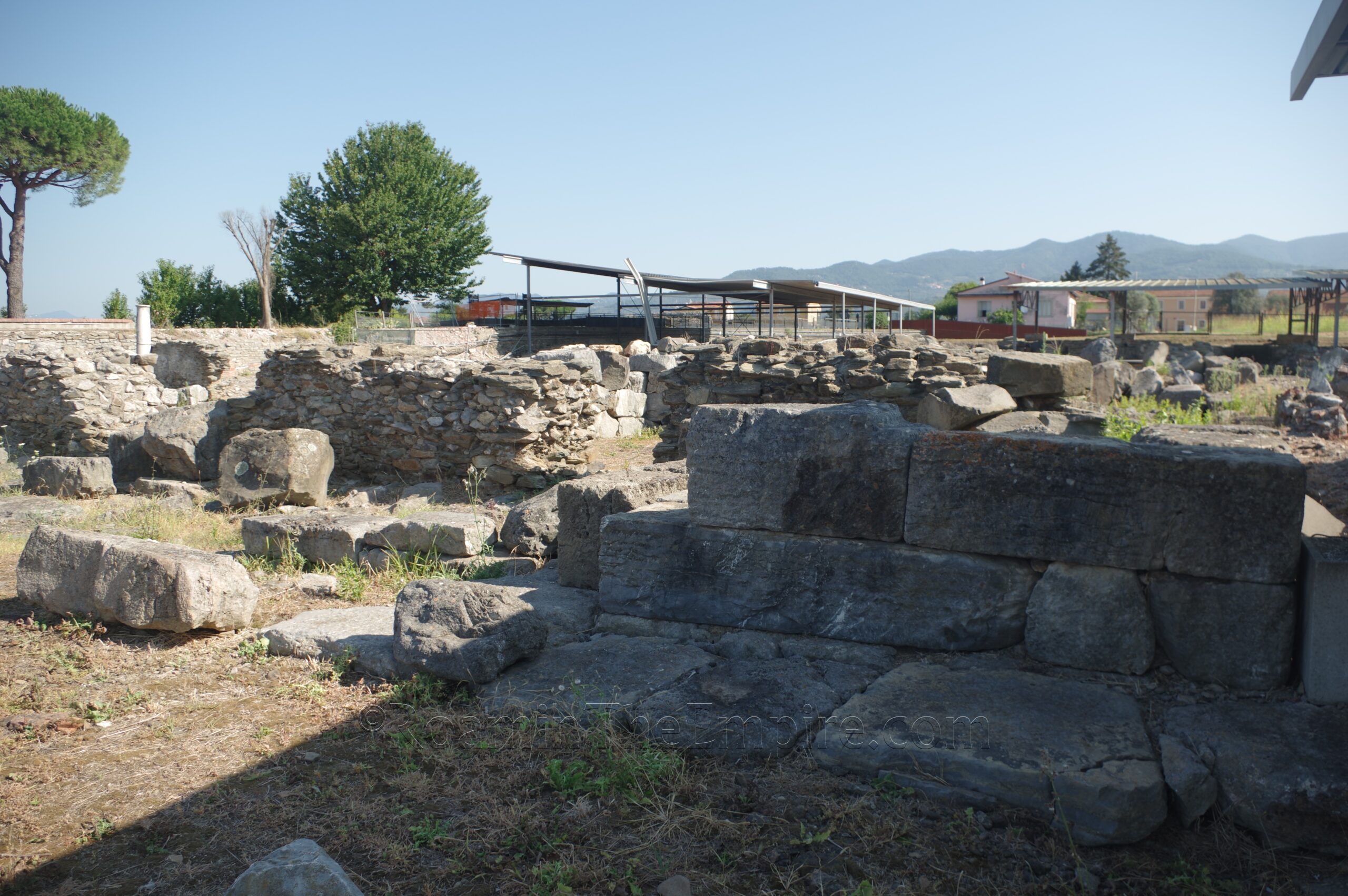
Continuing on, the archaeological area of Luna is primarily centered around the forum, which is the first significant area encountered. The pathway from the museum spills out onto the decumanus maximus, which runs along the north side of the open area of the forum. The construction of this road dates roughly to the foundation of the city in 177 BCE. Flanking the north side of the forum and the decumanus maximus was a large temple, likely the capitolium. The temple was also originally constructed in the years immediately following the establishment of Luna. It is surrounded by a portico on three sides sometime after its original construction, one of which has been newly exposed and accessible after the very recent (at the time of writing) demolition of a modern building that overlaid the western side of the capitolium area. The temple underwent a major renovation in the 1st century CE with monuments and smaller shrines built into the area abutting the temple. At this time the civic basilica was also built into the eastern portico that surrounded the temple.
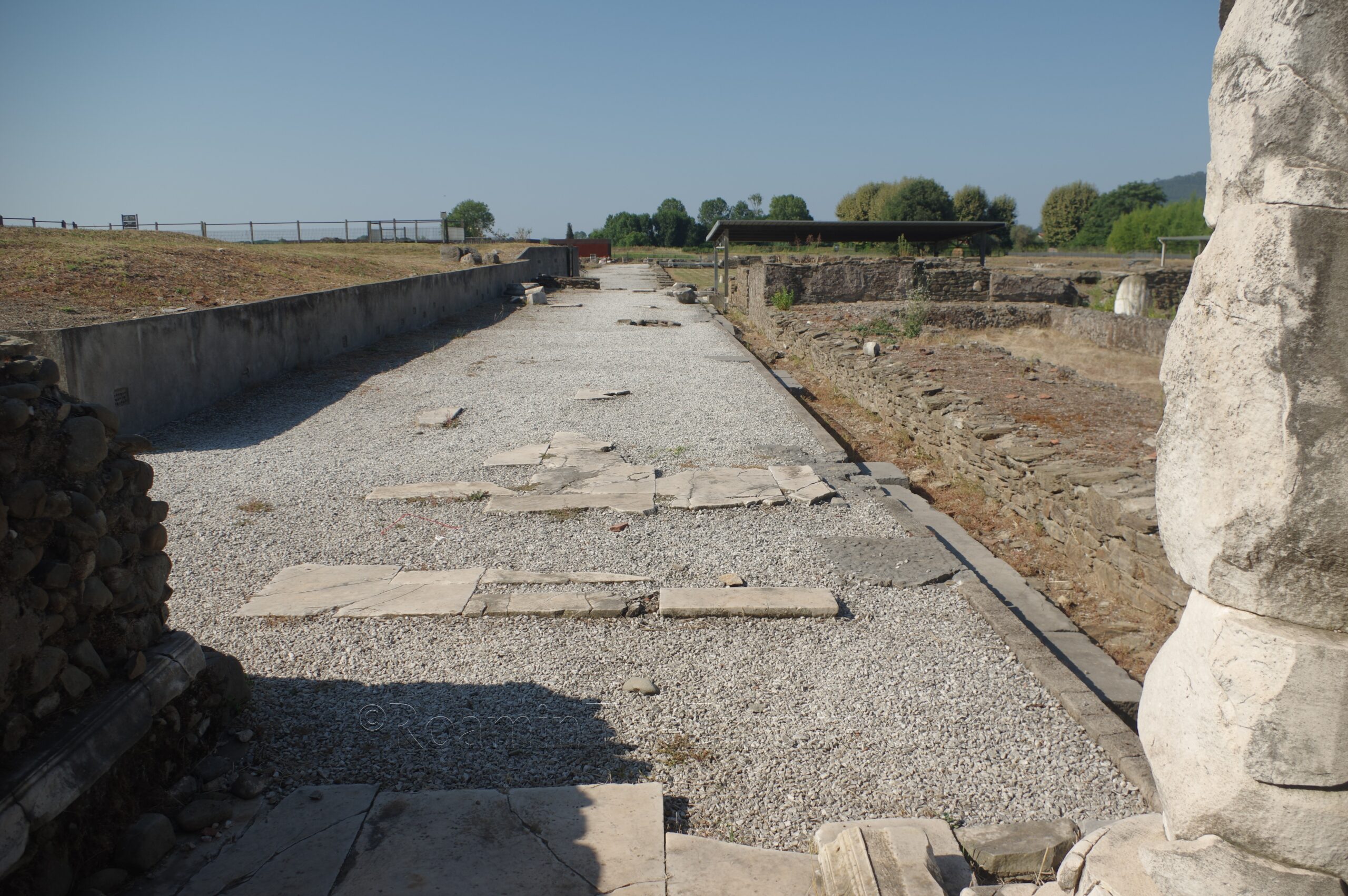
Not much is left of the form of the civic basilica other than a few column fragments and some of the paving stones. A domestic structure was constructed in the northern part of the basilica in the 5th century CE, and a few burials have been found in the vicinity as well. The temple area itself is a bit of a mess as well, with some later constructions overlaying parts of the temple and making it a little difficult to pick out the foundations of the actual temple. In the late 4th century CE, the northern portico of the capitolium was converted into a series of rooms that were apparently associated with the Domus dei Mosaici (the House of the Mosaics, the core of which is located to the northwest of the temple, but not accessible). Among these rooms were some associated with a small private bathing area for the house as well as some remains of an adjacent garden area. This part of the site is not directly accessible, and there isn’t much to see from the civic basilica side. But after exiting the forum, there is a walkway on the east and north sides that allow for better views.
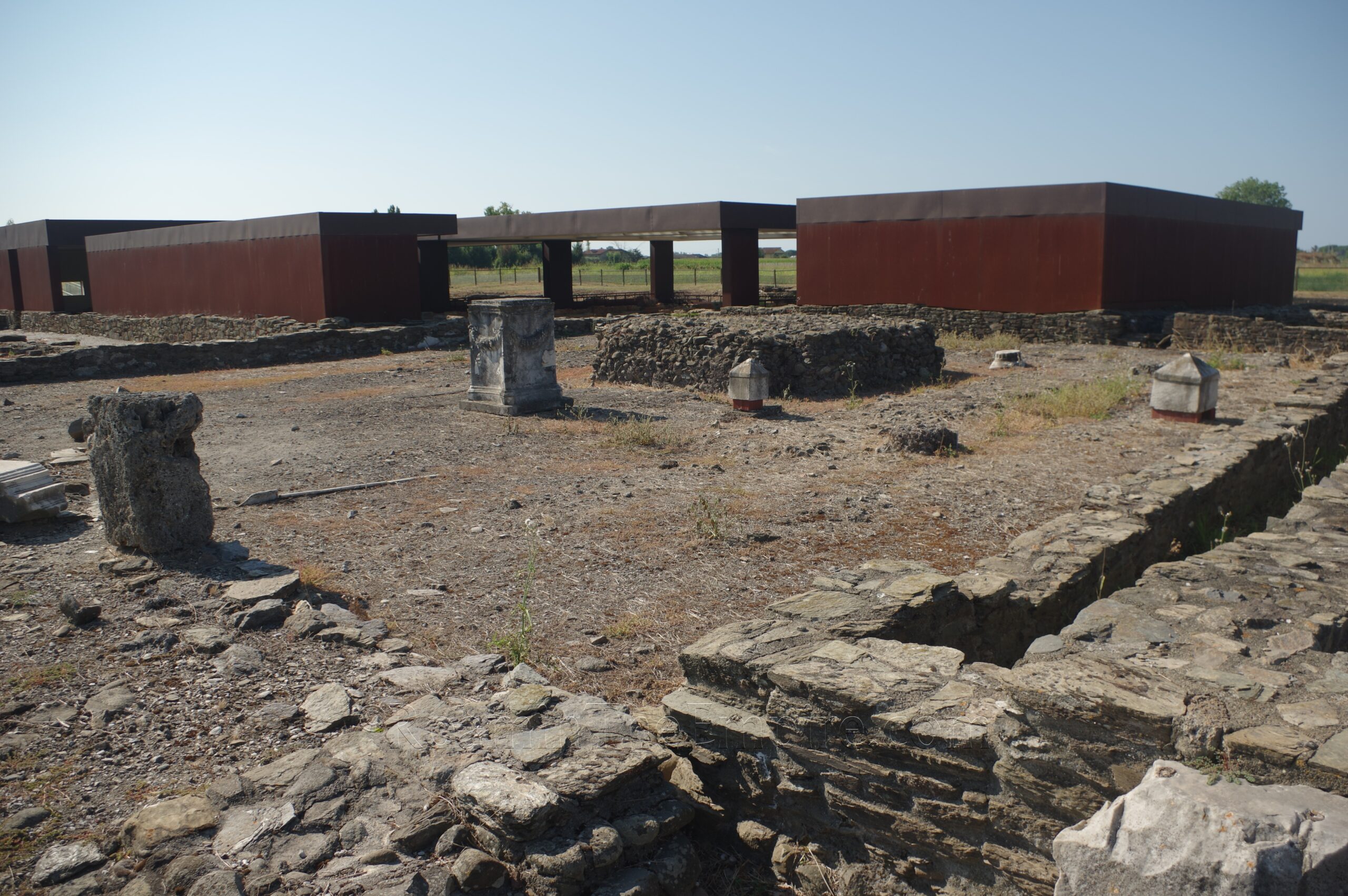
To the south of the temple was, again, the open area of the forum. Only a few bits of fragmentary paving from the square remain along with some later constructions. The east and west sides of the forum were bounded by colonnaded porticos. A bit more of the pavement is present along the western portico. Originally these were both lined by taberna, but a reorganization of the forum in the early 1st century CE saw those on the east side demolished. The remains of taberna are still present on the west side of the forum under a protective roof, though, with several of these shops displaying remaining marble pavements.
Along the south side of the forum are a number of public buildings. In the southeast corner is a space that seems to have served as the augusteum or collegium of the Augustales. Technically along the east side of the forum is small room that served as the actual shrine. To the south of it is a larger open area, today identifiable by a marble altar and large base at the center. This area seems to have displayed statues of emperors (parts of statues of Claudius and Augustus were found here) and had a number of small fountains, the traces of which are only barely visible now. Prior to the imperial period, this area seems to have been taken up by domestic structures.
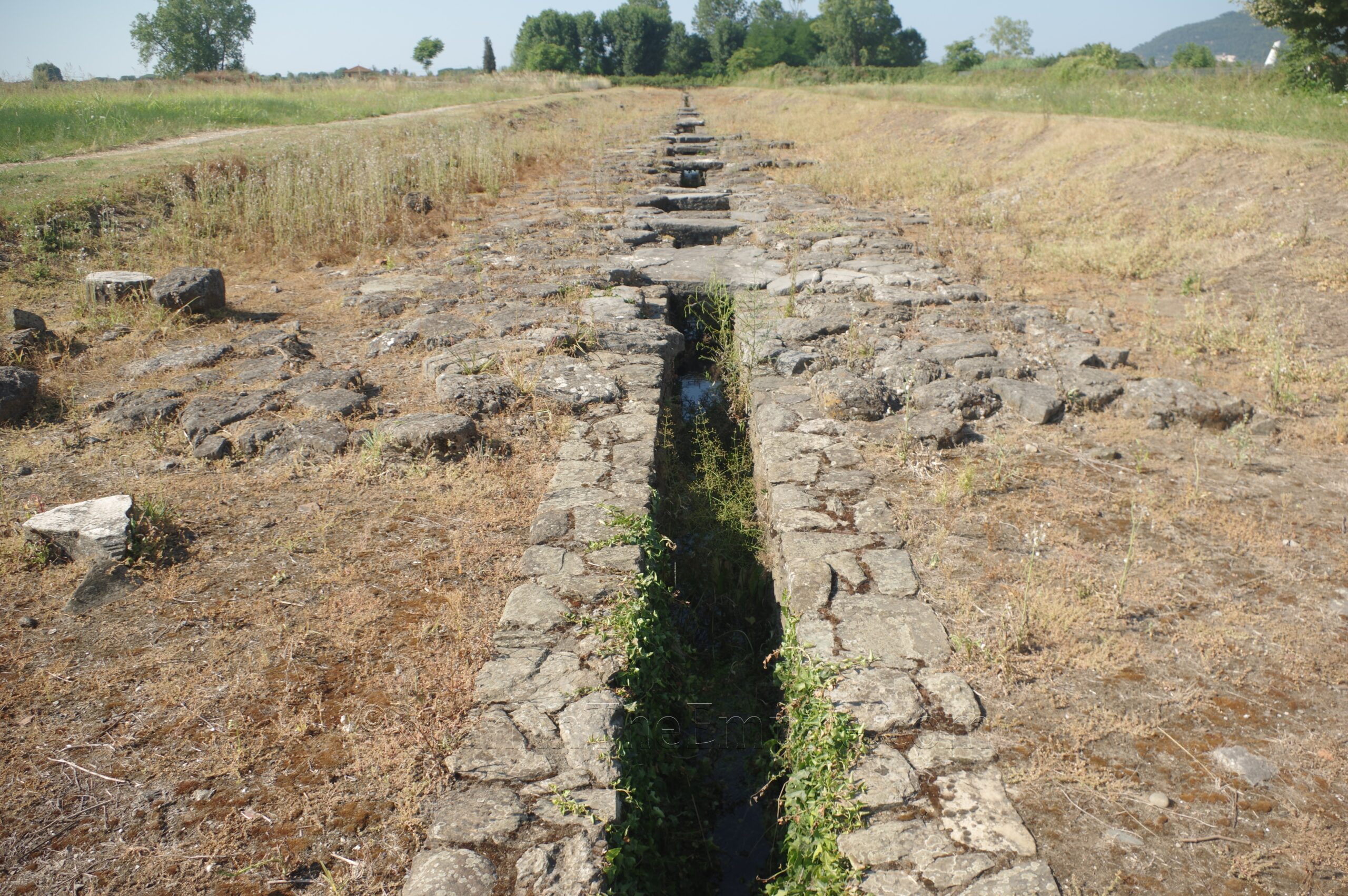
To the west of the augusteum was a monumental entryway into the forum, from which a more than 700 meter long stretch of the cardo maximus extends toward the south. This monumental entryway, visible in two podiums flanking the end of the cardo maximus, dates to about 50 CE. The cardo maximus enters the forum and terminates here at an interesting building with a series of five long, thin rooms or chambers that is accessible by a stairway from this direction, and which looks out onto the forum through a colonnaded portico. This building is identified as the curia, and seems to have underwent a major reconstruction about 150 CE. The cardo maximus can be followed all the way south to the end of the excavation. The sewer channel beneath it is exposed for much of it. There’s something excavated on the east side about 350 meters from the entry into the forum, but that is mostly covered up and overgrown.
Continued In Luna, Etriria Part II
Sources:
Coles, Amanda J. “Founding Colonies and Fostering Careers in the Middle Republic.” The Classical Journal, Vol 112, No. 3 (Feb/Mar 2017) pp. 280-317.
Grant, Michael. A Guide to the Ancient World: A Dictionary of Classical Place Names. New York: Barnes & Noble Books, 1997.
Livy. Ab Urbe Condita, 41.13
Martial. Epigrams, 13.30
Pliny the Elder. Historia Naturalis, 3.8.1, 11.97.1, 14.8
Smith, William. Dictionary of Greek and Roman Geography. Walton & Murray, 1870.
Stillwell, Richard, William L. MacDonald, and Marian Holland. McAllister. The Princeton Encyclopedia of Classical Sites. Princeton, NJ: Princeton U Press, 1976.


